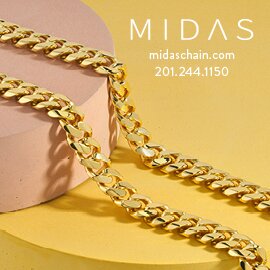With RHODUNA® PT ONE, Umicore Electroplating Develops Electrolyte Especially for Beakers
Umicore Electroplating's alloy coatings have been successful on the market for decades. The advantages of being able to deposit alloys with almost identical layer characteristics significantly more economically (in relation to the pure precious metal) are well known. However, this privilege was usually reserved for industrial customers, as the electrolytes were specially designed for large volumes. This is understandable – with large quantities, even small fluctuations in the price of precious metals can cause considerable costs in production, which must be kept calculable.
As the price of rhodium continued to rise, so did the demand for a more cost-effective alternative for small batch sizes. Today, rhodium costs about 40 times more than it did five years ago, a price development that can no longer be easily absorbed even for small batches. Umicore Electroplating has responded to the wishes of many dealers and their customers and developed RHODUNA® PT ONE, an electrolyte that is specially designed for rhodium plating on a small scale.
Layer Properties Are Almost Identical To Those Of The Big Brother Rhoduna® PT
Due to the high price of rhodium at that time (peak 80 €/g), Umicore developed the rhodium-platinum electrolyte RHODUNA® PT in 2018. The platinum price, which has remained constant over the years, still puts the price increase of rhodium into perspective to a large extent. The resulting cost savings and only irrelevant qualitative compromises for decorative processes allowed the product to quickly become successful on the market. Today, it is a fixed component for many renowned major customers and thus an established basis for the available ONE variant. The almost identical coating properties with those of its big brother RHODUNA® PT result from the closeness to the product. For example, the abrasion resistance is also specified as 600 HV and the maximum layer thickness (up to 0.3 μm) or the density of the coating (approx. 18.7 g/cm³) differ only marginally.
Even the L* value of 88 differs only marginally (-0.9) despite the significantly higher platinum content. The difference in brightness is thus difficult to detect even for a trained eye under optimal conditions, making the coating just as attractive for end customers as a com- mon rhodium coating from industrial production with RHODUNA® PT.
Electrolyte And Handling Is Specially Tailored For Beaker Applications
"We quickly saw the need for an adaptation for small series. Over the last few months, the costs have gotten out of hand, even in this context, and switching to other precious metals is not an adequate substitute for certain requirements and applications. With RHODUNA® PT ONE, we want to buffer the enormous increase in rhodium prices for small electroplating job shops, so that high-quality production can continue even on a small scale," explains Markus Legeler (Manager Sales International).
The fact that the rhodium-platinum electrolyte has in- deed been fundamentally revised and optimised to meet the special requirements for small batches becomes clear in less obvious aspects. For example, the metal content has been reduced to 1 g (0.3 g/l Rh, 0.7 g/l Pt) per litre, which again has a positive effect on the purchase price - last April this resulted in a price saving of about 65% compared to a pure rhodium electrolyte.
And Umicore has not only made some adjustments with regard to efficiency, but has also obviously invested a lot in a significantly simplified handling. For example, apart from the electrolyte, only the simplest equipment is needed for the coating. The fact that the specified parameters (temperature, time, current, etc.) often cannot always be constantly fulfilled has also been taken into account. Thus, good coating results in a wider tolerance range are possible with simple means.
The Rhoduna® Pt Product Family Continues To Grow
Due to the success of the RHODUNA® PT electrolyte introduced 3 years ago, the product family is continuously being further developed. In the meantime, the originally static electrolyte can be used much more flexibly in the alloy composition (50% Rh, 50% Pt). Thanks to the com- ponents of the process, the proportion can now be used variably by the user - a variable mixing ratio of 20 to 80 is now possible in both directions without any problems. In addition, the first positive feed- back on RHODUNA® PT ONE has prompted Umicore to now also offer RHODUNA® PT in a 1g (previously only 2g) version. In addition, Umicore recently also offers RHODUNA® PT PEN, a well-designed pen variant for targeted, partial rhodination.
About Umicore
Within the Umicore Group, Umicore Electroplating is responsible for product development, production, sales and service coordination in around 60 countries. The company boasts a long history in Schwaebisch Gmuend reaching back to 1888. Founded as a precious metals refinery, the company is now a globally leading company in precious metal electroplating. Umicore Electroplating is a wholly owned subsidiary of Allgemeine Gold- und Silberscheideanstalt AG, Pforzheim, whose majority owner is the Umicore Group. Electroplating is currently referred to as a cross-sectional technology, as it is used on many all everyday products and/or facilitates their pro- duction. Almost all renowned producers in the communications, automotive and jewellery industries directly or indirectly use items that have been plated using Umicore products from Schwaebisch Gmuend. Umicore Electroplating operates and enjoys a leading position in a special niche area defined by precious metal-based plating combinations. For more information, please visit: ep.umicore.com/pt-one


 Facebook
Facebook Twitter
Twitter